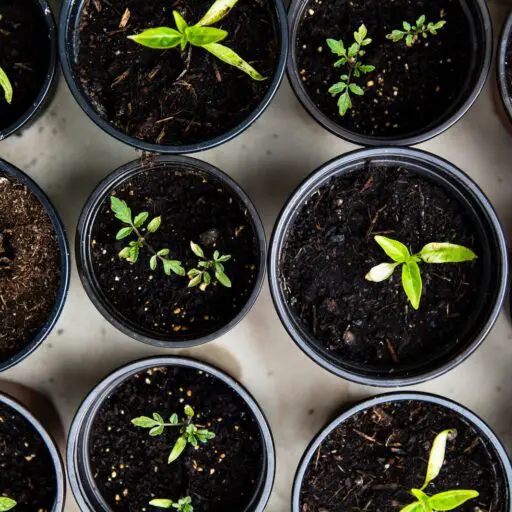Support our educational content for free when you purchase through links on our site. Learn more
Have you ever wondered what it’s like to grow your own food alongside a vibrant community? Community gardens are more than just patches of green; they’re social hubs, educational spaces, and havens for fresh produce. Think of it like a neighborhood potluck, but instead of bringing a dish, you bring your green thumb! We’ll guide you through the fascinating world of community gardening, exploring everything from finding the right garden for you to fostering a thriving community spirit. Ready to unearth the secrets of community gardening success? Let’s dig in!
Quick Answer
Community gardens are a unique blend of social interaction, environmental stewardship, and fresh food production. They offer a rewarding experience for individuals and communities, fostering a sense of belonging, promoting healthy lifestyles, and contributing to a more sustainable future. Here’s a quick snapshot of how they work:
- Finding Your Match: Research local gardens, consider your needs, and attend a garden meeting to get a feel for the community.
- Getting Your Hands Dirty: Learn about plot planning, soil preparation, planting techniques, and ongoing maintenance.
- Building Community: Participate in events, workshops, and volunteer days to connect with fellow gardeners and strengthen the garden’s impact.
👉 Shop for Gardening Essentials:
- Fiskars Pruning Shears: Amazon | Walmart | Fiskars Official Website
- Raised Garden Beds: Amazon | Walmart | Gardener’s Supply Company Official Website
- Plant Food: Amazon | Walmart | Miracle-Gro Official Website
Table of Contents
- Quick Tips and Facts
- The Evolution of Community Gardens: From Urban Oasis to Social Hub
- The Benefits of Joining a Community Garden: More Than Just Fresh Veggies!
- Finding Your Perfect Community Garden Match: A Guide to Getting Started
- Getting Your Hands Dirty: A Step-by-Step Guide to Community Gardening
- Community Garden Etiquette: Nurturing Relationships and Respecting Shared Space
- Beyond the Plot: Building Community Through Shared Gardening
- Community Garden Success Stories: Inspiring Tales of Growth and Connection
- Conclusion
- Recommended Links
- FAQ
- Reference Links
Quick Tips and Facts
Want to dive into the wonderful world of community gardening? Here’s your beginner’s cheat sheet! 🌱
- Start Small: Don’t bite off more than you can chew (or weed!). Begin with a small plot, learn the ropes, and gradually expand your green horizons.
- Teamwork Makes the Dream Work: Community gardens thrive on collaboration. Be ready to lend a helping hand, share your knowledge, and learn from fellow gardeners. 🤝
- Respect Garden Etiquette: Every garden has its own set of guidelines. Familiarize yourself with them to ensure a harmonious experience for everyone.
- Embrace the Learning Curve: Gardening is a journey of trial and error. Don’t be afraid to make mistakes, ask questions, and celebrate your successes! 🎉
The Evolution of Community Gardens: From Urban Oasis to Social Hub
Community gardens, once seen as humble plots for growing food, have blossomed into vibrant hubs of social interaction and environmental stewardship. 🌻 Let’s dig into the fascinating history of these green spaces:
From Victory Gardens to Urban Renewal
The roots of community gardening can be traced back to the Victory Garden movement during World War I and II. Facing food shortages, citizens transformed backyards, parks, and even rooftops into productive gardens, demonstrating the power of collective action.
In the 1960s and 70s, community gardens sprouted in urban areas as a response to social and environmental concerns. They transformed neglected lots into green oases, providing fresh food for underserved communities and fostering a sense of ownership and pride.
Modern Community Gardens: Cultivating More Than Just Food
Today, community gardens continue to evolve, embracing sustainability, education, and social justice. They serve as:
- Outdoor Classrooms: Teaching children and adults about gardening, nutrition, and environmental stewardship.
- Community Gathering Spaces: Hosting workshops, potlucks, and events that bring people together.
- Therapeutics Gardens: Providing therapeutic benefits for individuals with disabilities or mental health challenges.
As we move towards a more sustainable future, community gardens will undoubtedly play an even greater role in fostering healthy communities and resilient food systems. Learn how you can promote gardening in your community at 15 Ways to Grow a Thriving Community Garden 2024.
The Benefits of Joining a Community Garden: More Than Just Fresh Veggies!
Thinking about joining a community garden? Get ready for a rewarding experience that goes beyond the bounty of fresh produce! 🍅 Here’s why:
1. Dig into a Healthier Lifestyle
- Physical Activity: Gardening is a great way to get some exercise and soak up some Vitamin D. ☀️
- Stress Relief: Immersing yourself in nature and nurturing plants can work wonders for your mental well-being.
- Nutritious Food: Access to fresh, homegrown produce encourages healthier eating habits.
2. Connect with Your Community
- Meet Your Neighbors: Community gardens are fantastic places to connect with people from all walks of life.
- Learn New Skills: Share knowledge, exchange tips, and learn from experienced gardeners.
- Build Community Resilience: By growing food locally, you contribute to a more sustainable and food-secure community.
3. Nurture Your Green Thumb (and the Planet!)
- Learn to Garden: Whether you’re a novice or a seasoned pro, there’s always something new to learn.
- Sustainable Practices: Many community gardens promote organic gardening methods, composting, and water conservation. 💧
- Environmental Stewardship: By growing your own food, you reduce your carbon footprint and support biodiversity.
Curious about the Benefits of Community Gardens? We’ve got you covered!
Finding Your Perfect Community Garden Match: A Guide to Getting Started
Ready to embark on your community gardening adventure? 🗺️ Here’s how to find the perfect garden for you:
1. Do Your Research
- Online Resources: Websites like the American Community Gardening Association (ACGA) and local gardening groups often have directories of community gardens in your area.
- Community Bulletin Boards: Check local libraries, community centers, and coffee shops for flyers or announcements.
- Word of Mouth: Ask friends, neighbors, or colleagues if they know of any community gardens.
2. Consider Your Needs and Preferences
- Location: Choose a garden that’s conveniently located and easily accessible by foot, bike, or public transport.
- Garden Size and Type: Some gardens offer individual plots, while others have communal growing spaces.
- Rules and Regulations: Familiarize yourself with the garden’s guidelines, such as organic practices or pet policies.
3. Get in Touch and Visit
- Contact the Garden Coordinator: Reach out to the garden coordinator to inquire about plot availability, membership fees, and any waiting lists.
- Attend a Garden Meeting or Workday: This is a great way to meet fellow gardeners, get a feel for the garden’s culture, and ask any questions you may have.
Finding the right community garden is like finding the perfect pair of gardening gloves – it should feel just right! 🧤
Getting Your Hands Dirty: A Step-by-Step Guide to Community Gardening
Congratulations on joining your community garden! 🎉 Now, let’s get down to the nitty-gritty of planting, tending, and harvesting:
1. Planning Your Plot
- Know Your Site: Assess your plot’s sunlight exposure, soil type, and water access to determine suitable plants.
- Choose Your Crops: Select varieties that are well-suited to your climate and growing conditions.
- Create a Planting Schedule: Determine the best time to sow seeds or transplant seedlings based on your local frost dates.
2. Preparing the Soil
- Test Your Soil: A soil test will reveal its pH level and nutrient content, guiding you on necessary amendments.
- Amend the Soil: Improve drainage and fertility by adding compost, aged manure, or other organic matter.
- Create Planting Beds: Form raised beds or rows to improve drainage and make planting more efficient.
3. Planting with Purpose
- Direct Sowing vs. Transplanting: Some seeds thrive when sown directly into the ground, while others benefit from starting indoors.
- Spacing and Depth: Follow seed packet instructions for proper spacing and planting depth to ensure healthy growth.
- Watering: Keep the soil consistently moist, especially during germination and early growth stages.
4. Ongoing Care and Maintenance
- Watering Wisely: Water deeply and less frequently to encourage strong root development.
- Weeding Regularly: Stay on top of weeds to prevent them from competing with your plants for resources.
- Mulching: Apply a layer of organic mulch to suppress weeds, retain moisture, and regulate soil temperature.
5. Harvesting Your Bounty
- Know When to Harvest: Refer to seed packets or gardening guides for optimal harvest times for each crop.
- Harvest Regularly: Consistent harvesting encourages continued production and prevents overripening.
- Share the Abundance: Enjoy your harvest and consider sharing any surplus with neighbors, friends, or local food banks.
For more tips and tricks, especially if you’re new to gardening, check out our Gardening for Beginners section.
Community Garden Etiquette: Nurturing Relationships and Respecting Shared Space
Community gardens thrive when everyone feels respected and valued. Here’s a crash course in garden etiquette to ensure a harmonious experience for all:
1. Communication is Key
- Attend Garden Meetings: Stay informed about garden news, events, and any upcoming workdays.
- Communicate with Plot Neighbors: Give a heads-up about any potential disruptions, such as spraying for pests or needing to access a shared water source.
- Share Your Knowledge: Offer help to new gardeners or those who might be struggling.
2. Respect Shared Resources
- Water Wisely: Be mindful of water usage, especially during dry periods.
- Return Tools Promptly: Don’t leave tools lying around, and return borrowed items clean and in good condition.
- Dispose of Waste Properly: Use designated compost bins for organic waste and dispose of trash responsibly.
3. Maintain a Tidy and Orderly Space
- Keep Your Plot Tidy: Regularly weed, prune, and maintain your plot to prevent it from becoming overgrown.
- Clean Up After Yourself: Dispose of any plant debris, tools, or personal belongings after each gardening session.
- Respect Boundaries: Avoid encroaching on neighboring plots or pathways.
4. Foster a Positive and Inclusive Environment
- Be Kind and Respectful: Treat fellow gardeners with courtesy and respect, regardless of their experience level or background.
- Welcome Newcomers: Offer a friendly greeting and be willing to answer questions or lend a helping hand.
- Celebrate Diversity: Embrace the diverse perspectives and experiences that each gardener brings to the community.
Remember, a little consideration and respect go a long way in creating a thriving and welcoming community garden for everyone! For more insights into creating respectful and productive Community Garden Policies, visit our dedicated section.
Beyond the Plot: Building Community Through Shared Gardening
Community gardens are more than just places to grow food; they’re fertile ground for cultivating meaningful connections and building a strong sense of community. 🏘️ Here’s how:
1. Shared Activities and Events
- Potlucks and Gatherings: Organize potlucks featuring garden-fresh dishes, fostering a sense of shared enjoyment and appreciation for the garden’s bounty.
- Workshops and Skill-Sharing: Host workshops on various gardening topics, from composting to seed saving, to exchange knowledge and empower gardeners.
- Volunteer Days: Organize regular volunteer days for garden maintenance, creating opportunities for teamwork and camaraderie.
2. Community Outreach and Partnerships
- Food Bank Donations: Donate surplus produce to local food banks or shelters, addressing food insecurity and giving back to the community.
- School Garden Programs: Partner with local schools to establish or support school gardens, educating children about gardening, nutrition, and sustainability.
- Intergenerational Connections: Create opportunities for seniors and youth to connect through gardening, fostering intergenerational learning and mentorship.
3. Celebrating Diversity and Inclusion
- Culturally Diverse Crops: Encourage the cultivation of culturally significant crops, reflecting the diversity of the community and promoting inclusivity.
- Language Accessibility: Provide information and resources in multiple languages to ensure accessibility for all community members.
- Welcoming Atmosphere: Create a welcoming and inclusive atmosphere where everyone feels respected, valued, and empowered to participate.
Looking for inspiration and ideas for your next community gathering? Explore our Community Garden Events section!
Community Garden Success Stories: Inspiring Tales of Growth and Connection
Ready to be inspired by the transformative power of community gardens? ✨ Here are a few heartwarming stories:
1. The Vacant Lot Transformation
In a neighborhood plagued by blight, a group of residents came together to transform a vacant lot into a vibrant community garden. What was once an eyesore became a source of fresh food, a gathering place for neighbors, and a symbol of hope and renewal. The garden not only beautified the neighborhood but also fostered a sense of community pride and ownership.
2. Bridging the Generation Gap
An intergenerational community garden brought together seniors and youth, fostering unlikely friendships and valuable learning experiences. Seniors shared their gardening wisdom, while young people brought fresh energy and enthusiasm. The garden became a place where generations connected, learned from each other, and built lasting bonds.
3. Empowering Newcomers Through Gardening
A community garden program welcomed refugees and immigrants, providing them with a space to grow food from their home countries, connect with others, and adapt to their new community. The garden became a place of cultural exchange, where newcomers felt a sense of belonging and shared their traditions through the food they grew.
These stories highlight the profound impact community gardens can have on individuals, neighborhoods, and the environment. They remind us that when we come together to grow food, we cultivate so much more than just plants – we cultivate community, connection, and a more sustainable future.
Conclusion

Community gardens are more than just patches of green – they’re living testaments to the power of collective action, fostering a sense of community, promoting healthy lifestyles, and contributing to a more sustainable future. 🌎 By joining a community garden, you become part of a network of individuals who share a passion for growing food, nurturing connections, and making a positive impact on their surroundings. Remember, even the smallest contribution can make a big difference! So, what are you waiting for? Find a community garden near you and start growing! 🌱
Recommended Links
👉 CHECK PRICE on:
- Fiskars 10-Inch Bypass Pruning Shears: Amazon | Walmart | Fiskars Official Website
- Gardener’s Supply Company Raised Garden Bed: Amazon | Walmart | Gardener’s Supply Company Official Website
- Miracle-Gro LiquaFeed Tomato, Vegetable & Herb Plant Food: Amazon | Walmart | Miracle-Gro Official Website
👉 Shop Gardening Books on: Amazon
FAQ

How do you make a community garden work?
- Establish Clear Goals and Vision: Define the garden’s purpose, whether it’s providing fresh food, fostering community, or promoting environmental stewardship.
- Develop a Strong Foundation: Secure a suitable location, establish a governing body, and develop clear rules and regulations for members to follow.
- Embrace Collaboration and Communication: Encourage open communication, share responsibilities, and celebrate successes as a team.
- Cultivate Inclusivity and Accessibility: Make the garden welcoming and accessible to people from all walks of life, regardless of their gardening experience or background.
- Seek Funding and Resources: Secure funding for supplies, tools, and infrastructure, and explore partnerships with local organizations or businesses.
- Promote Engagement and Sustainability: Organize events, workshops, and volunteer days to keep members engaged and ensure the garden’s long-term sustainability.
How do you deal with conflict in a community garden?
- Open Communication: Encourage open communication and active listening to address concerns and resolve conflicts.
- Clear Expectations: Establish clear expectations for members, outlining roles and responsibilities, and address potential conflicts proactively.
- Mediation and Conflict Resolution: Develop a process for mediating disputes and resolving conflicts fairly and respectfully.
- Focus on Shared Goals: Remind members of the garden’s shared goals and emphasize the importance of cooperation and mutual respect.
Read more about “🌱 7 Ways Community Gardens Benefit the Global Community …”
What are the disadvantages of a community garden?
- Conflicts and Disagreements: Personality clashes, differences in gardening styles, and disputes over resources can arise.
- Theft and Vandalism: Produce, tools, and garden infrastructure can be targets of theft or vandalism.
- Limited Resources: Community gardens often rely on limited funding and volunteer support, which can impact their growth and development.
- Maintenance and Upkeep: Maintaining a community garden requires ongoing effort and commitment from members.
- Accessibility Issues: Community gardens may not be accessible to all individuals, especially those with limited mobility or transportation.
Read more about “What are the disadvantages of a community garden?”
What is the point of a community garden?
Community gardens are more than just places to grow food; they serve a multitude of purposes, including:
- Promoting Food Security: Providing access to fresh, nutritious food, especially for underserved communities.
- Fostering Community Connections: Bringing people together from diverse backgrounds and fostering a sense of belonging.
- Enhancing Environmental Stewardship: Promoting sustainable gardening practices, such as organic methods, composting, and water conservation.
- Providing Educational Opportunities: Teaching individuals about gardening, nutrition, and environmental sustainability.
- Improving Neighborhood Aesthetics: Transforming vacant lots into green spaces, enhancing the beauty and livability of neighborhoods.
Read more about “What is the point of a community garden?”
What is a community garden vs. collective garden?
- Community Garden: A shared gardening space where individuals cultivate their own plots while also participating in shared activities and decision-making.
- Collective Garden: A garden where all members work together to grow food, sharing the harvest and the responsibilities of maintaining the garden.
Reference Links
- American Community Gardening Association (ACGA): https://www.communitygarden.org/
- Fiskars: https://www.fiskars.com/
- Gardener’s Supply Company: https://www.gardeners.com/
- Miracle-Gro: https://www.miraclegro.com/
- Pros And Cons Of Community Gardening: https://www.gardeningknowhow.com/gardening-pros-cons/pros-and-cons-of-community-gardening#:~:text=Personality%20clashes%20are%20among%20the,be%20exacerbated%20by%20cultural%20differences.



